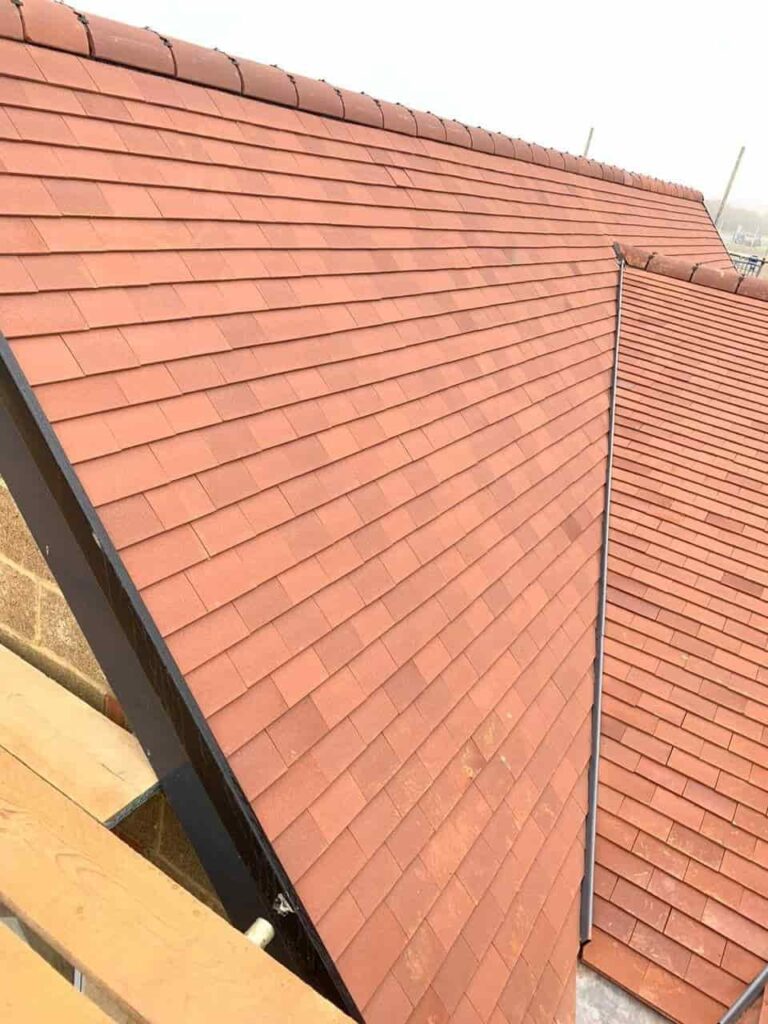A pitched roof is one of the most effective and visually appealing roofing systems for residential properties in the UK. While it may appear straightforward to install, it requires precise workmanship, technical knowledge, and adherence to building standards. At Folkestone Roofing Services in Folkestone, Kent, we frequently attend properties where DIY pitched roof installations have led to preventable defects—some of which compromise the safety, integrity, and weatherproofing of the roof.
Whether carried out by inexperienced homeowners or unqualified tradespeople, these common mistakes highlight why professional installation is essential.
Why DIY Pitched Roof Installations Are Risky
Roofing may seem like a cost-saving project, but pitched roofs are structurally complex. Errors in installation don’t always present immediate issues but can develop into costly repairs months or years later. Improper methods, substandard materials, or lack of ventilation can all result in premature failure.
1. Incorrect Tile or Slate Fixing
One of the most frequent issues is the improper placement or fastening of roof tiles or slates. In a pitched roof, tiles must be correctly aligned and securely fixed to withstand wind uplift and rain penetration.
Signs of poor tile installation:
- Uneven tile spacing or sagging lines
- Loose or slipping tiles after storms
- Gaps allowing wind-driven rain to enter
- Visible nails or fixings causing cracking
Insecure tiles are not only a leak risk—they also pose a safety hazard to people and property below.
2. Inadequate Underlay or Waterproof Membrane
The underlay provides a crucial second layer of protection beneath the outer covering. Many DIY installations either omit this layer or use non-breathable or incorrectly fitted materials.
Consequences of faulty underlay:
- Condensation in the roof void
- Water ingress under tiles
- Deterioration of insulation and timber rafters
- Reduced thermal efficiency
Correct underlay placement helps manage moisture, supports insulation, and extends the roof’s life.
3. Poor Ridge and Verge Detailing
The ridge (top of the roof) and verge (gables) require precise detailing to seal the roof and prevent wind-driven rain from entering. DIY installations often fall short here, leading to leaks and structural concerns.
Common ridge and verge defects:
- Crumbling or missing mortar bedding
- Exposed ridge fixings vulnerable to movement
- Open gaps between tiles and verge boards
- Use of non-compliant dry ridge systems
Failure to weatherproof these areas can undermine the roof’s overall performance.
4. Insufficient Ventilation
Ventilation is critical in pitched roof design to prevent condensation build-up in the loft or attic. Many DIY installations neglect this aspect, resulting in long-term issues with damp and timber decay.
Ventilation errors include:
- No eaves or ridge ventilation
- Blocked or undersized vents
- Lack of airflow through insulation layers
- Mould growth in rafters or on insulation
Correct ventilation promotes airflow, reduces condensation, and protects roof timbers from moisture damage.
5. Faulty Lead Flashing Installation
Lead flashing around chimneys, valleys, and roof abutments must be fitted with care to prevent water ingress. DIY attempts often result in poor adhesion, incorrect overlaps, or failure to secure the lead properly.
Flashing-related problems:
- Leaks where the roof meets walls or chimneys
- Buckled or slipping lead work
- Inappropriate sealants used instead of proper fixing
- Cracks or gaps forming around junctions
Professional flashing work ensures long-term weatherproofing and compliance with building regulations.
6. Inconsistent Pitch and Structural Errors
In some DIY cases, the pitch of the roof is incorrectly calculated or inconsistently executed. This affects drainage, snow load handling, and overall aesthetics.
Issues with incorrect pitch:
- Inadequate water run-off
- Pooling or slow-draining water on tiles
- Increased pressure on internal supports
- Reduced lifespan of roofing materials
A roof’s pitch must be compatible with its covering material and local weather conditions.
Why Choose Folkestone Roofing Services?
At Folkestone Roofing Services, we provide professional pitched roof installations and repair services throughout Folkestone, Kent. Our experienced team ensures that every element—from the underlay to the ridge capping—is correctly installed to British Standards. We also inspect and rectify DIY roofing defects, restoring safety, functionality, and value to your home.
Conclusion
DIY pitched roof installations may appear to offer initial savings, but the long-term risks far outweigh the benefits. From leaking tiles and poor ventilation to compromised structural elements, common defects can lead to extensive damage and costly repairs. For lasting quality, safety, and peace of mind, trust the expertise of professionals. If you’re dealing with DIY roof issues or planning a new installation, contact Folkestone Roofing Services for expert support and reliable roofing solutions in Folkestone, Kent.
Call us on: 01303 761494
Click here to find out more about Folkestone Roofing Services
Click here to complete our contact form and see how we can help with your roofing needs.
